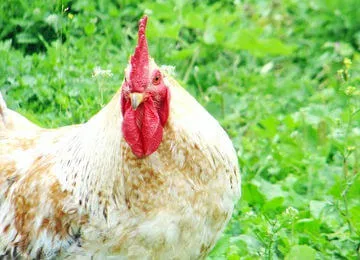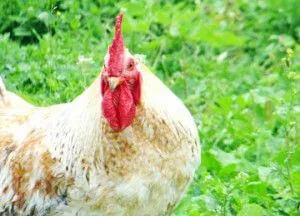
- Share on Facebook88
- Share on Pinterest
- Share on Twitter
On average, an American meal usually consists of ingredients from five different countries (Leopold Center for Sustainable Agriculture, 2007). Just last week, the Department of Agriculture approved Chinese chicken processing plants to ship chicken to America. For now, it is just cooked chicken products from birds raised in the United States that are allowed to be shipped; however, critics say that it won’t be long before we are eating chicken and turkey raised in China.
What is Wrong with Chicken from China?
Americans, in general, are becoming more interested in where their food is coming from. This is a movement that is likely to continue as people attempt to improve their health and focus more on sustainability. With that in mind, this recent move on the part of our government has many people worried.
Imported foods have been the source of contamination in recent years. The Food and Drug Administration notes that even spices such as curry, coriander, sesame seeds and oregano may contain high levels of salmonella.
China does not exactly have a great track record when it comes to food safety. A recent FDA investigation found that 500 dogs died due to contaminated chicken jerky treats from China. The treats were eventually traced and recalled, but not before over 2,500 animals (both dogs and cats) became seriously ill.
There is no way of knowing where your chicken is coming from because it does not have to be put on the label. However, there are options. One is to purchase chicken only from local farmers that you know, or you can raise your own chickens.
Yes, You Can Keep Chickens in Your Backyard
Chickens are becoming more and more popular in urban areas. Backyard chicken keepers are not only keeping small flocks as pets, but also for eggs and meat. These useful birds are easy and inexpensive to care for, and are a great step toward self sustainability.
Standard size chickens only require about 1 square foot of coop space and 2 square feet of outdoor space to be happy (though we would recommend more). This means that a 4-by-4-foot coop and a 4-by-8-foot run houses between 8 -12 birds. Once your chickens are laying you will have well over 3 dozen organic eggs per week for little or no upkeep.
Steps Toward Getting Backyard Chickens:
Ask your county about ordinances. Some cities have specific laws and some do not allow chickens at all. However, most are pretty willing to allow this new urban trend. Some cities may require that you keep only hens, to keep the noise down.
Some may put a limit on the amount of birds you have, and may be willing to change with a little convincing. There are areas that do not allow chickens in the backyard of homes but may allow a community flock in a park or empty lot in town.
Check with your neighbors. Ask your neighbors if they are o.k. with you having chickens. If you plan on keeping roosters, make sure to ask them if they mind crowing at dawn and be sure they are going to be comfortable having the birds around.
Roosters are not needed to produce eggs – they are if you want to hatch chicks. If your neighbors are not happy with your choice, it will make keeping chickens in your backyard much more difficult. Most chicken owners will soon have more eggs than they can eat, so be sure to let your neighbors know that there will be plenty to share.
Build your coop. Once you have the green light from the city and your neighbors, it is time to build your coop. There are many great books and online resources with building plans, or you could purchase a pre-built coop.
Whatever you choose it needs to be safe, secure, properly sized and functional. A safe coop is protected from predators like loose dogs or snakes. A secure coop will keep your chickens in for their safety and protect them from the weather. Remember, chickens need at least 1 square foot of indoor space and 2 square feet of outdoor space.
 A coop also needs to be functional and easy for you to clean and collect eggs. Some common chicken house styles include coops with a run, chicken tractors which can be moved around your yard, and green roof chicken coops where you can grow fresh herbs on top of your coop. Many backyard chicken keepers turn old dog houses or garden sheds into a perfect coop with little or no investment.
A coop also needs to be functional and easy for you to clean and collect eggs. Some common chicken house styles include coops with a run, chicken tractors which can be moved around your yard, and green roof chicken coops where you can grow fresh herbs on top of your coop. Many backyard chicken keepers turn old dog houses or garden sheds into a perfect coop with little or no investment.
Acquire your chickens. Once your coop is built, it is time to get your chickens. Visit local farmers, or a chicken swap to purchase chickens. First time chicken owners will have better luck starting out with hens that are already laying. You could start with chicks, but this takes time and energy to get them to the egg laying stage.
Be sure to do all of your research before you get started in backyard chicken keeping. The learning experience is fun for the whole family, and the result of keeping chickens puts you one step closer to providing for your family in a way that hearkens back to our heritage of living off our land.
-The Alternative Daily
- Share on Facebook88
- Share on Pinterest
- Share on Twitter

